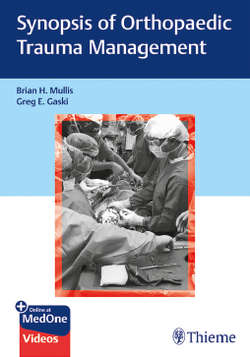Читать книгу Synopsis of Orthopaedic Trauma Management - Brian H. Mullis - Страница 82
На сайте Литреса книга снята с продажи.
VII. Treatment and Indications for Pharmacotherapy
ОглавлениеA. Postmenopausal women and men over 50 years of age with history of hip fracture or vertebral fracture.
B. Severe osteoporosis: T-score below −2.5 with a history of a fragility fracture.
C. T-score < −2.5—diagnostic for osteoporosis.
D. T-score between −1.0 and −2.5 at the femoral neck or spine, and 10-year risk of hip fracture over 3% or 10-year risk of major osteoporotic fracture over 20% (calculated by FRAX).
1. Lifestyle modifications—healthy, balanced diet, smoking cessation, limit alcohol intake, regular exercise (improved coordination reduces fall risk, slows bone resorption, improves mental well-being).
2. Dietary supplementation: 1000 mg calcium/day for premenopausal women and men over 50 years; 1,200–1,500 mg calcium/day for postmenopausal women; 800–1000 international units (IU) vitamin D/day over 50 years.
3. Treatment of secondary causes (treating or stabilizing medical conditions and adjusting medications).
E. Pharmacologic agents
1. Antiresorptive medications:
a. Bisphosphonates (first line):
i. High affinity for calcium and binds to exposed calcium in areas of high bone turnover.
ii. Osteoclast activity liberates the medication from bone, but it remains in bone for a long time (half-life ~ 10 years), thus rebound bone resorption does not occur.
iii. Two mechanisms of action:
• Nitrogen containing bisphosphonates inhibit farnesyl pyrophosphate synthase (pamidronate, alendronate, risedronate, zoledronate, ibandronate).
• Non-nitrogen containing bisphosphonates disrupt the ATP metabolic pathway by generating synthetic ATP analogue leading to osteoclast apoptosis (etidronate, cloduronate, tiludronate).
iv. Adverse events:
• Gastrointestinal upset, esophagitis, esophageal ulcers. Contraindicated in patients who are unable to swallow or sit upright for 30 minutes following administration.
• Osteonecrosis of the jaw—rare, more common in patients with dental problems.
• Atypical femur fractures—subtrochanteric/proximal femoral shaft; associated with minimal or no trauma; radiographic features include transverse or short oblique, minimal comminution, medial spike, lateral cortical thickening. Risk is increased with prolonged use over 3 years.
b. Denosumab:
i. Monoclonal antibody to RANKL.
ii. Given every 6 months.
iii. Reduces risk of vertebral fractures by 68%, hip fractures by 40%, and nonvertebral fractures by 20%.
iv. Can be associated with atypical femur fractures, osteonecrosis of the jaw, and rebound increased bone turnover.
v. Indicated in patients with contraindication to bisphosphonate use.
c. Hormone replacement therapy:
i. Effective in reducing risk of all fractures.
ii. Not used commonly due to increased risk of cardiovascular disease, venous thrombosis, and breast cancer with prolonged use.
d. Raloxifene:
i. Selective estrogen receptor modulator (SERM).
ii. Estrogen agonist at bone and antagonist in other tissues (no increased risk of malignancy).
iii. Decreases risk of vertebral fractures only.
iv. Not commonly used.
e. Tibolone:
i. Partial agonist at estrogen, progesterone, and testosterone receptors.
ii. Reduces risk of vertebral fractures by 45% and nonvertebral by 26%.
2. Anabolic medications—increase bone turnover, result in net positive bone deposition.
a. Parathyroid hormone 1–34 and 1–84:
i. Partial fragment (1–34), teriparatide, commonly used in cases of severe osteoporosis and failure of treatment.
ii. Increased risk of osteosarcoma in animal models has not been reported in humans.
iii. Nonetheless, contraindicated in patients with conditions of increased bone turnover (Paget’s disease, open physes, unexplained elevation in alkaline phosphatase, previous external beam or implant radiation therapy).
3. Initiation of pharmacotherapy following fracture:
a. Animal studies show a delay in callus maturation following administration of bisphosphonates.
b. No clinical evidence to suggest that bisphosphonates retard bone healing when administered in the perioperative period for the proximal femur and distal radius.
4. Bisphosphonates should be stopped following treatment of atypical femur fractures.
